|
|
||||||||||||||||||||||||||||||||||||||||||||||||||||||||||
|
Please sign my Guestbook and leave feedback |
||||||||||||||||||||||||||||||||||||||||||||||||||||||||||
|
Recent Additions |
||||||||||||||||||||||||||||||||||||||||||||||||||||||||||
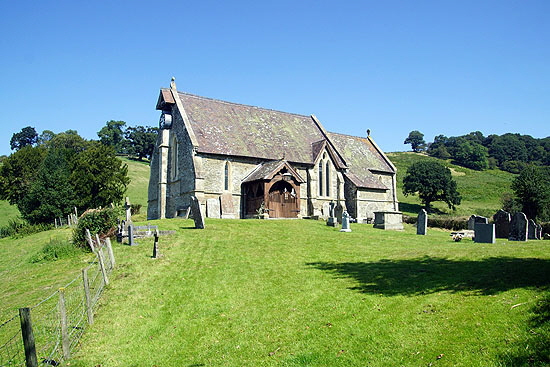 |
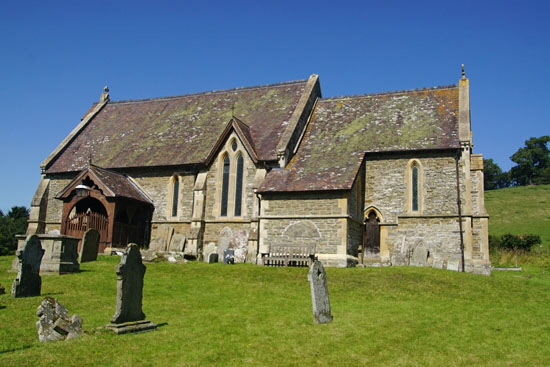 |
||||||||||||||||||
|
As you can see, the setting is a rural delight and I visited on a gorgeous August day in 2019. You are only a mile or two from the Welsh border here. The church has only two cells, as one presumes that the Norman building also did. All of the windows are faux Early English lancets. Bizarrely, the west end has a very large station-style clock built into a buttress. It has a delightful incongruity and I have never seen such a clock on the outside of a church anywhere else. Quite why anyone saw a need for it is anybody’s guess! The tympanum can be seen set into the south wall to the right of the gabled lancet windows in the right hand picture. |
|||||||||||||||||||
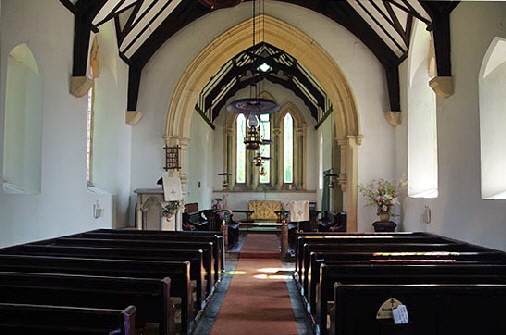 |
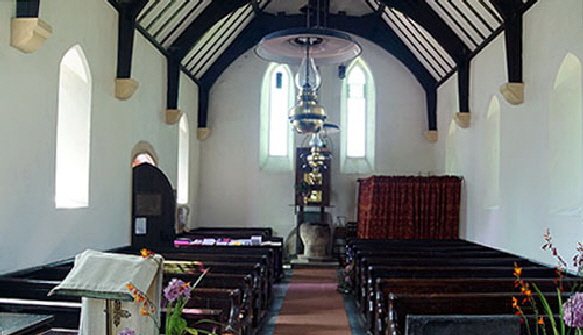 |
||||||||||||||||||
|
Left: The view to the east with its triple lancet window and EE style chancel arch. Right: Looking to the west where you can just see the Norman font lurking. There is no electricity here as you can see from the oil lamps. So how does that clock function? Does somebody wind it up? Does it have a couple of AA batteries? |
|||||||||||||||||||
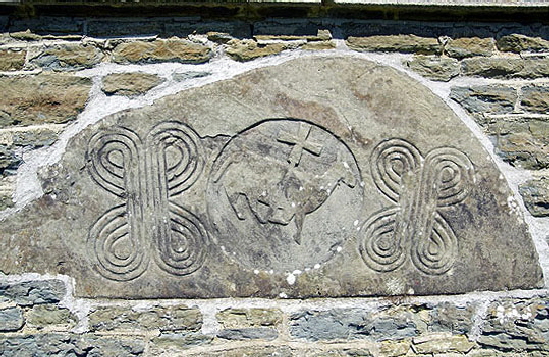 |
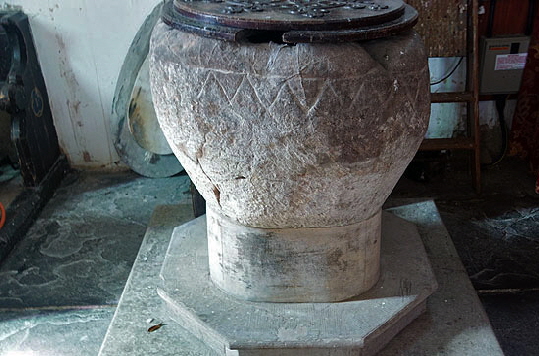 |
||||||||||||||||||
|
Left: The preserved tympanum with its agnus dei central motif. What is odd here is that the motif is not horizontal. Why would this be? There are obviously bits missing so I have tried making the agnus dei horizontal in Photoshop but that confirms what seems obvious: the geometric designs on either side are then all over the place, so the orientation that we see is probably correct. The geometric designs themselves are unusual but when you strip out the multi-stranded carving which makes the whole design chunky and rather clumsy you are left with a square with looped corners which, as Romanesque geometric designs go, is pretty basic. Do they “mean” anything? Well, there are websites and books that can put some kind of mystical or spiritual meaning on just about any design under the sun - generally lumped together under the optimistic label of “Celtic” (bah!) and also generally available as earrings, pendants, rings and so on! But I couldn’t find anything for these simple shapes so we’ll have to speculate that our mason was just having a bash at something decorative and making a bit of a hash of aligning them with each other to boot. Right: The Norman font is a dear thing. Unwilling to leave it as a completely plain tub, as so many Norman fonts are, the mason has carved out a little zigzag pattern beneath a more or less horizontal line. Yes, I know its crude but I find that little touch rather endearing. The bloke was trying to just add a touch of decoration and you know what? It’s survived for nearly a millennium. The mason has left his little mark on the world. What about you...? |
|||||||||||||||||||
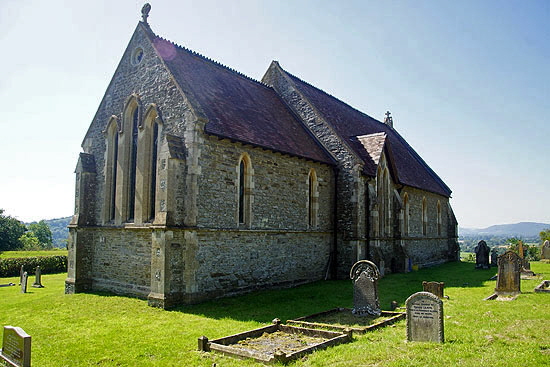 |
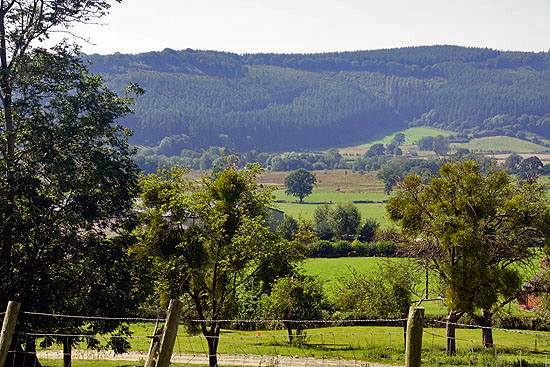 |
||||||||||||||||||
|
Left: The church from the north east. Right: The view from the west end towards the Welsh border. |
|||||||||||||||||||
|
Footnote |
|||||||||||||||||||
|
2019: the third year of hand-wringing and vitriol after the Brexit vote. Even the most obscure, mediocre and inane of our 650 MPs have had their fifteen minutes of fame on TV or Radio; earnestly telling us all how terribly worried they were for the future of our country and how they felt honour bound to reject the preferences of their own constituents because they were really too stupid to know how to vote. They didn’t agree with the Government, they didn’t agree with the Opposition, they didn’t agree with each other. If hyperbole was a currency we would have needed a wheelbarrowful to buy a tin of beans. If hyperbole were the banknotes, sanctimony was the coinage. The EU was the last bastion of civilisation. The EU was the Great Satan. No shades of grey. Just black and white. No changes of viewpoint allowed. Just keep digging, boys and girls. What has this to do with Byton Church? You had to be there. A beautiful August Sunday lunchtime. The few people in the area were cooking the Sunday roast or had decamped to the nearest pub. All was silent. All was harmonious. The people were not waving placards or shouting obscenities at each other. They were just getting on with their lives as people mostly do. I mentally ticked off the traumas that had affected even this little corner of England: the Saxon incursions; the Norman invasion; Llewellyn and Glyndwr; The Wars of the Roses; famines; deadly plagues; the Reformation; two World Wars. How does a decision whether or not to leave the European Union stack up with these? A bagatelle, no? So this footnote is to emphasise how church visiting gives you perspective. This little place has seen it all. Its font has wet the heads of the faithful for a millennium. For hundreds of years every parishioner in this area passed underneath that tympanum and looked at the Lamb of God and wondered about those odd geometric designs. We each think we are important; each generation feels uniquely threatened. If Byton Church had a face it would be smiling knowingly, |
|||||||||||||||||||
|
Click Here to Return to The World’s Greatest Church Trail IV |
|||||||||||||||||||